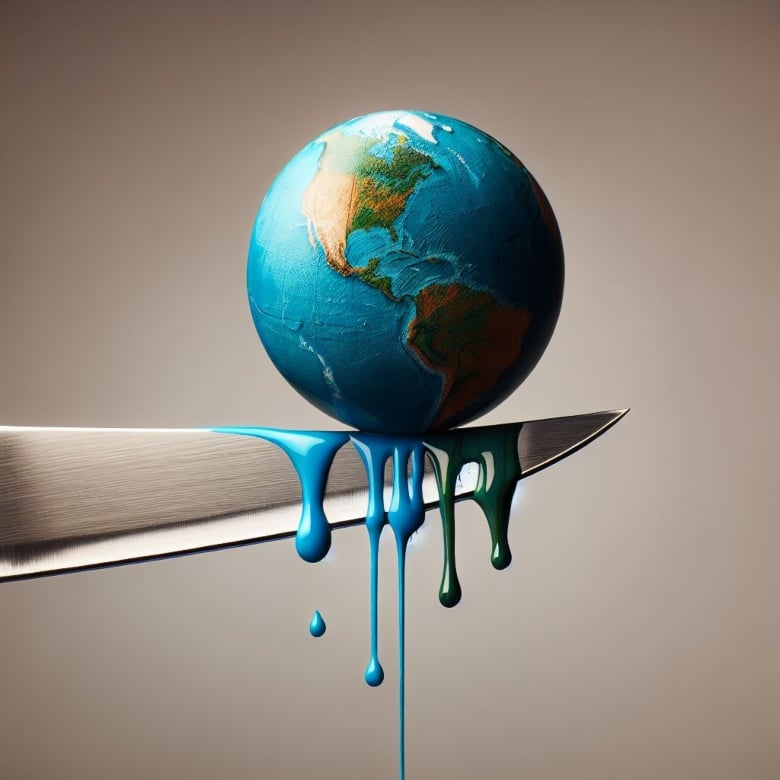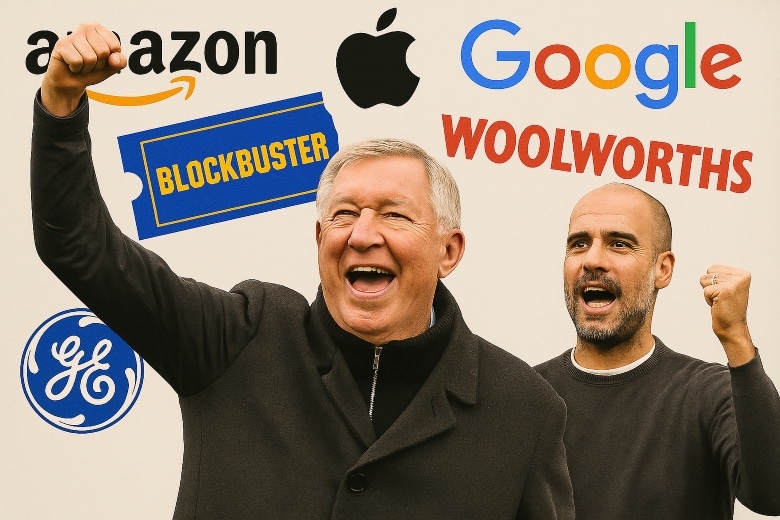
The past five years have felt like a whirlwind: a global pandemic, war in Ukraine, a cost of living crisis, and increasingly polarised politics. Like taxis on a cab rank, just as one crisis departs, another takes its place. It’s easy to feel that the world has become more unstable, divided, and difficult to understand. But are we really living through a uniquely uncertain period? Or does it feel that way because we’re in the middle of it?
Crises Aren’t New
A look back at the past hundred years puts things into perspective. The 20th century was shaped by world wars, economic depressions, and political upheaval. The early decades alone brought the First World War, the Spanish flu, the Great Depression and the Second World War. Later, the Cold War created global tensions and a real threat of nuclear conflict, while events like the oil shocks of the 1970s, the fall of the Berlin Wall, and the 9/11 attacks acted as political, social and economic turning points.
Even the more recent past, the 2008 financial crisis, the Eurozone debt crisis and Brexit remind us that news is rarely new. Every generation has had moments when the world felt like it was teetering on the edge of catastrophe.
Here’s a chronological list of major global crises from 1945 to the present, highlighting political, economic, social, and environmental events that had far-reaching impacts worldwide.
1940s
- 1939-1945: The Second World War.
- 1947-1949:Partition of India and Pakistan – The division of British India led to mass migrations, violence, and lasting geopolitical tension.
- 1948-1949:Berlin Blockade and Airlift – The Soviet Union blocked access to West Berlin, leading to a massive airlift by the Western Allies and irrevocable change to Russian/Western relations.
1950s
- 1950-1953:Korean War – North and South Korea, backed by global superpowers, engaged in conflict, escalating Cold War tensions.
- 1956:Suez Crisis – Egypt nationalised the Suez Canal, prompting military intervention by Britain, France, and Israel.
- 1957:Asian Flu Pandemic – The influenza pandemic spread globally, causing approximately 1–2 million deaths.
1960s
- 1962:Cuban Missile Crisis – The US and Soviet Union faced off over Soviet missiles in Cuba, bringing the world to the brink of nuclear war.
- 1964:1975:Vietnam War – A major Cold War conflict in Southeast Asia, leading to significant US involvement and domestic unrest.
- 1967:Six-Day War – Conflict between Israel and neighbouring Arab states reshaped Middle Eastern geopolitics.
1970s
- 1973:Oil Crisis – OPEC oil embargo led to soaring energy prices and global economic slowdown.
- 1974-1975:Global Recession – High inflation, energy shortages, and stagnant growth impacted global economies.
- 1979: The Iranian Revolution – Led to the establishment of an Islamic Republic in Iran, affecting oil markets and regional stability that is still felt today.
- 1979-1989:Soviet-Afghan War – Soviet invasion of Afghanistan fuelled a prolonged conflict and contributed to Cold War tensions.
1980s
- 1980-1988:Iran-Iraq War – A brutal war with significant economic and human costs, affecting oil production and global markets.
- 1982:Latin American Debt Crisis – Many Latin American countries defaulted on debt, leading to a “lost decade” of economic hardship.
- 1986:Chernobyl Disaster – A nuclear meltdown in the USSR led to widespread radiation exposure and long-term environmental damage.
- 1987:Black Monday – Stock markets around the world crashed, with the US Dow Jones dropping 22.6% in a single day.
1990s
- 1990-1991:Gulf War – Iraq’s invasion of Kuwait led to a US-led coalition military intervention, with significant impacts on oil prices.
- 1991:Collapse of the Soviet Union – The end of the USSR reshaped global geopolitics, ending the Cold War but creating new challenges.
- 1997:Asian Financial Crisis – Rapid capital outflows led to a severe economic crisis in East and Southeast Asia.
- 1998:Russian Financial Crisis – Declining oil prices and debt led to a collapse of the Russian economy, impacting global markets.
2000s
- 2000-2001:Dot-com Bubble Burst – Excessive speculation in technology stocks led to a market crash, affecting the global economy.
- 2001:9/11 Attacks – Terrorist attacks on the United States led to the War on Terror and long-term military involvement in Afghanistan.
- 2002-2004:SARS Outbreak – Severe Acute Respiratory Syndrome spread internationally, impacting economies and public health policies.
- 2007-2008:Global Financial Crisis – Subprime mortgage collapse in the US triggered a worldwide recession and financial instability.
2010s
- 2010-2012:European Sovereign Debt Crisis – Debt crises in Greece, Ireland, and other EU countries threatened the stability of the euro.
- 2011:Arab Spring – A wave of protests and uprisings across the Arab world led to regime changes and prolonged conflicts.
- 2014:Ebola Outbreak in West Africa – The Ebola virus killed thousands and impacted regional economies and healthcare systems.
- 2014:Ukraine Crisis (part 1) – Russia’s annexation of Crimea and support for separatists in Eastern Ukraine destabilised the region.
It’s hard to recall how it felt or would have felt for those alive during those earlier crises, but these seismic events would have all created a sense of anxiety that the world was changing permanently for the worse.
Why It Feels Different Now
There are a few reasons the present feels especially turbulent. First, we’re experiencing it all in real-time, with rolling news, constant alerts, and a steady stream of commentary. Social media doesn’t just inform; it amplifies the noise at a speed and scale not known a decade or more ago.
We’re also more globally connected than ever before, meaning that events in one part of the world have immediate consequences elsewhere. This interconnectedness increases our risk exposure, but also to information, which can add to the sense of foreboding. Historic events may have generated a few column inches at the time, but today it’s hard to avoid.
But if Populism and Right-Wing Politics are on the Rise, Aren’t We Going Backwards as a Global Society?
The rise of populism and the shift towards more right-leaning politics in many countries can feel like a step backwards, especially when viewed through the lens of liberal democratic values or international cooperation. But as with many things in history, it’s more complicated than a simple case of history being repeated.
Populism as a Symptom, Not a Cause
Populism, whether on the right or left, emerges in response to real grievances. Economic inequality, cultural change, political disenchantment, and the feeling that institutions no longer represent “ordinary people” all contribute to a populist mood. It’s not always irrational or purely ideological; it’s often rooted in a sense of exclusion or insecurity, particularly in the face of globalisation and rapid change.
Rather than a sign that we’re going backwards, populism is a signal that parts of society feel left behind by progress. That doesn’t excuse every policy or leader that falls under the populist label, nor do I shrug it off as inconsequential, but it does help explain the conditions that give rise to them. I am optimistic that there is sufficient living and learned memory from the past 80 years to avoid extreme forms of Socialism dominating global politics.
The Political Pendulum
Politics moves in cycles. There have been past periods where nationalism, protectionism, or populism surged: the 1930s, the post-war realignments, or even the Reagan-Thatcher era are examples. These shifts often provoke reactions, corrections, and counter-movements. What may feel like a turning away from progress is sometimes a recalibration, even if it’s messy and uncomfortable in the short term. Look at Europe’s response to Trump’s withdrawal from Ukraine and NATO.
Not All Right-Wing Movements Are the Same
It’s also worth distinguishing between moderate conservatism, far-right extremism, and populist rhetoric. Some right-leaning movements are focused on law and order, economic liberalism, or national identity, views that have long existed within democratic societies. Others cross into authoritarianism, xenophobia, or illiberalism, which are more concerning. Lumping them all together risks oversimplifying a diverse and shifting political landscape.
Global Trends Are Not Uniform
While some countries have moved rightwards, others have moved left or towards centrist, pragmatic coalitions: In Germany, Merz managed to hold off the AfD to establish a centrist coalition. In Austria, a coalition government has been formed around the political centre after the far-right FPO party failed to form a government.
In Chile’s forthcoming election polls suggest a move to more moderate, centrist politics and both Finland and New Zealand were led by progressive female leaders. In Brazil, having replaced Bolsonaro, President Lula da Silva is centre-left politician favouring international trade, diplomacy and pro-environmental policies. The global picture is more of a patchwork than a single trajectory.
Progress Is Resilient
Despite political polarisation, many positive trends: rising educational attainment, technological innovation, improvements in health, and expanding rights continue. Politics may lurch, but societal progress is often harder to undo than it seems. Even where populist leaders have gained power, institutions, civic groups, and voters have pushed back or imposed limits.
So, are we going backwards? In some areas there’s certainly cause for concern; democratic norms, political civility, social cohesion appear regressive. But it’s not a straightforward reversal. Populism often reflects tension during periods of rapid change. Rather than a collapse of progress, it may be part of the complex, sometimes chaotic process of reshaping societies to be more inclusive, secure, and responsive.






